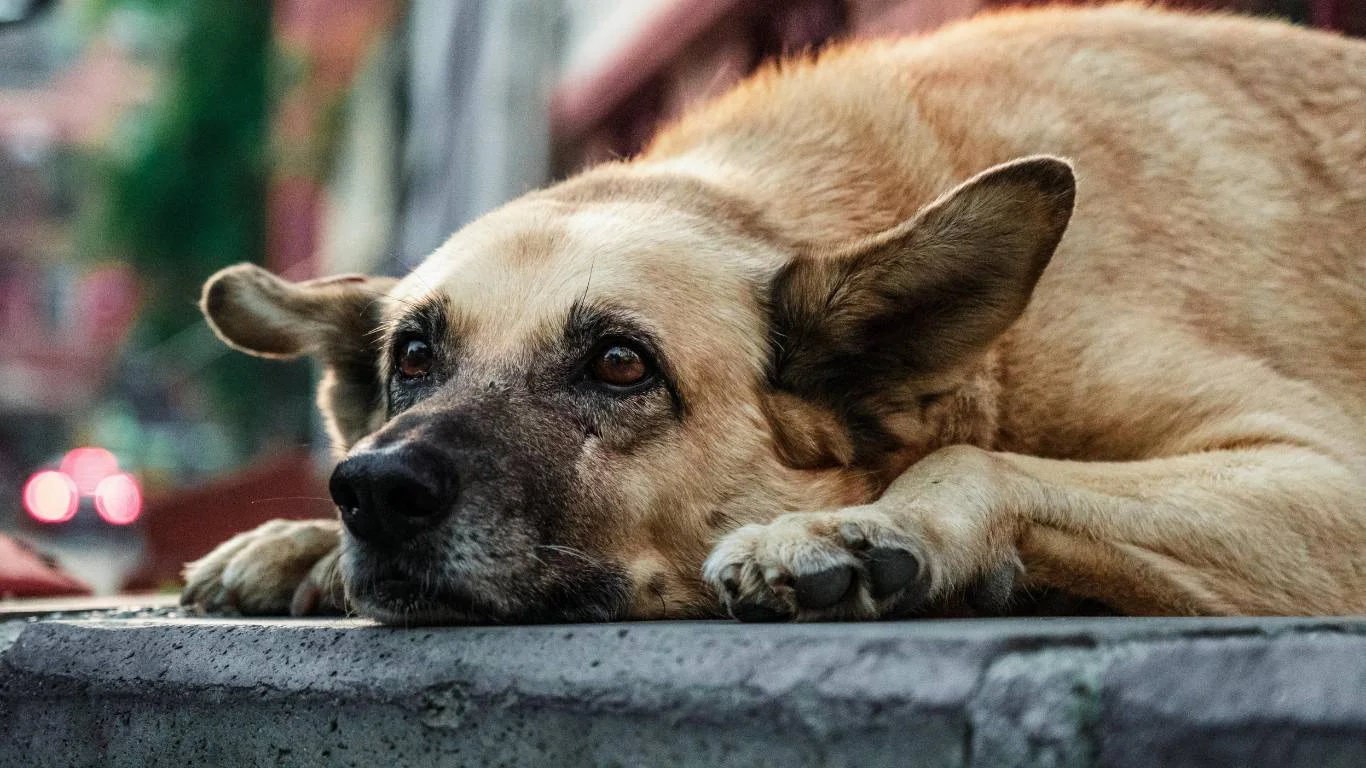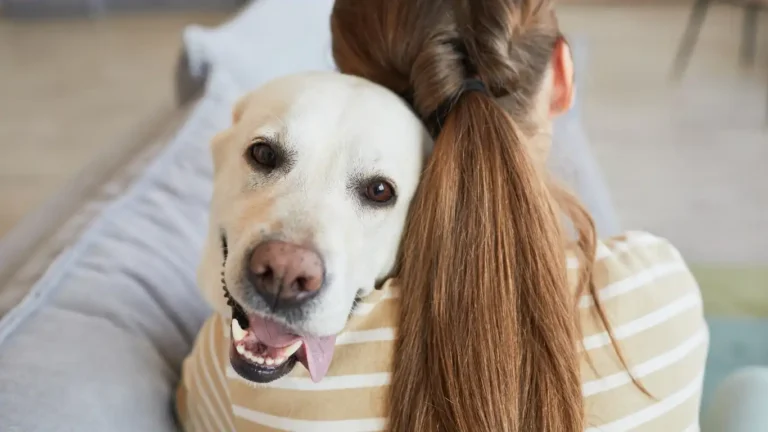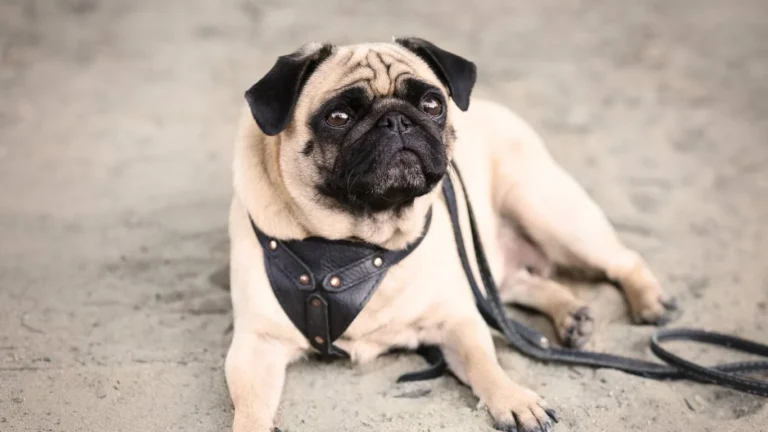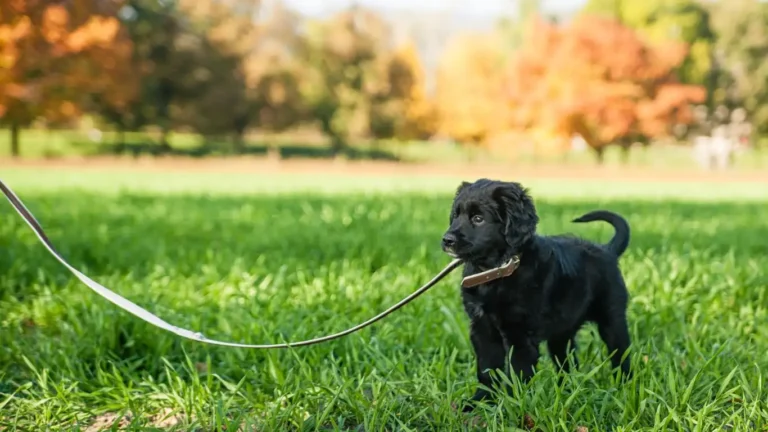How to Stop Excessive Panting in Dogs: Quick Solutions for Calm Pets
As a veterinary assistant with a focus on nutrition, I’ve encountered many concerned pet owners asking about their dogs’ excessive panting. It’s a common issue, and while panting is normal for dogs, especially after exercise or when they’re feeling hot, excessive panting can sometimes signal underlying health problems. As a dog lover and professional, I completely understand the concern, and I’m here to help guide you on how to stop excessive panting in dogs and ensure your furry friend is feeling their best.
Understanding Excessive Panting in Dogs

Panting is a natural way for dogs to regulate their body temperature and keep themselves cool. However, excessive panting, especially when it’s out of the ordinary, can be a cause for concern. As a pet parent, it’s important to observe your dog’s behavior and understand when panting may be a sign of something more serious.
What’s Normal Panting for Dogs?
First things first, it’s important to recognize what “normal” panting looks like. Dogs typically pant after exercise, when they’re excited, or when they’re exposed to heat. This type of panting is completely normal and is just a way for your dog to release heat and regulate their body temperature.
- After exercise: If your dog has been running around or playing, panting is a natural response to help cool down.
- When excited: Many dogs pant when they’re happy or excited—whether that’s meeting a new friend or anticipating a walk.
- In hot weather: Panting in the heat is a way for dogs to stay cool, just like humans sweat to regulate their body temperature.
But when panting becomes excessive or occurs without an obvious cause, it’s time to pay closer attention. And that’s where the real concern lies—understanding when panting is too much.
Reasons Why Your Dog Might Be Panting Excessively

Excessive panting in dogs can occur for several reasons. While some may be harmless, others might require veterinary attention. It’s crucial to know when to step in and help your dog out. Here’s a breakdown of the common causes behind excessive panting in dogs.
1. Heatstroke or Overheating
Heatstroke is one of the most common causes of excessive panting, especially in the summer months. Dogs are more sensitive to heat than humans, and they can’t sweat like we do to cool off. Instead, they rely on panting to regulate their body temperature.
If you notice your dog panting heavily after being outside in the sun or during a particularly hot day, it could be a sign that they’re overheating. Heatstroke is a serious condition and can lead to organ failure if not treated immediately.
- Look for signs of drooling, bright red gums, or lethargy.
- If you suspect heatstroke, move your dog to a cooler area, offer them water, and contact your vet immediately.
2. Anxiety or Stress
Just like humans, dogs can experience anxiety. When they do, excessive panting may accompany other signs like whining, pacing, or even drooling. Anxiety can be triggered by various things: thunderstorms, separation anxiety, or visits to the vet.
As a veterinary assistant, I’ve seen this kind of panting many times. I once cared for a sweet dog who would pant heavily every time they heard a loud noise, like fireworks. The first step in managing anxiety-induced panting is to identify the trigger. Once you know what’s causing the stress, you can work on desensitization or offer calming solutions like pheromone diffusers or anxiety wraps.
3. Pain or Discomfort
Another common cause of excessive panting is pain. If your dog is panting more than usual and doesn’t seem to be exhibiting signs of excitement or heat, it might be an indication that they’re in discomfort.
Sometimes the pain is subtle, like from arthritis or an injury, but it can also be related to more serious conditions like internal issues, abdominal pain, or even cancer. If your dog shows any signs of limping, reluctance to move, or tenderness when touched, it’s worth consulting your veterinarian to rule out any health concerns.
How to Help Your Dog Manage Excessive Panting

So now that you know the potential reasons behind excessive panting, let’s talk about what you can do to help your dog feel better. Whether it’s managing their stress or cooling them down in the heat, there are steps you can take to make sure your dog stays comfortable.
Cooling Your Dog Down
If your dog’s panting is due to heat, cooling them down quickly is key. Ensure they have access to fresh water at all times, and take them to a cool, shaded area immediately. You can also offer your dog a cooling mat or a fan to help regulate their body temperature.
- Give them cool water: Offer small amounts of water regularly, especially if your dog is dehydrated.
- Use cooling mats: These are specially designed to absorb body heat and keep your dog cool.
- Provide shade and ventilation: A fan or air conditioning can help circulate cooler air in your home.
Pay attention to your dog’s body language and breathing patterns. If their panting continues or they exhibit signs of distress, don’t hesitate to reach out to your vet for guidance.
Managing Anxiety and Stress
If stress is the culprit behind your dog’s excessive panting, it’s essential to address the root cause of their anxiety. You can try creating a calming environment for your dog by providing a quiet space away from noise, using calming treats, or engaging in positive reinforcement training to reduce their stress levels.
In more severe cases, a veterinarian may recommend medications or behavior therapy. However, with the right approach and consistency, most dogs can be helped to manage their anxiety and the associated panting.
How to Stop Excessive Panting in Dogs: Practical Tips and Solutions
Now that we’ve covered some of the common causes behind excessive panting in dogs, let’s dive into how you can stop it. There are a variety of strategies you can employ, depending on the root cause of your dog’s panting. I’ve worked with many pet owners who were unsure how to handle their dog’s panting, and what I’ve found is that a little knowledge and the right approach can make all the difference in calming your dog down and getting them back to feeling like themselves again. Here are some effective ways to manage panting in dogs and help your furry friend feel more comfortable.
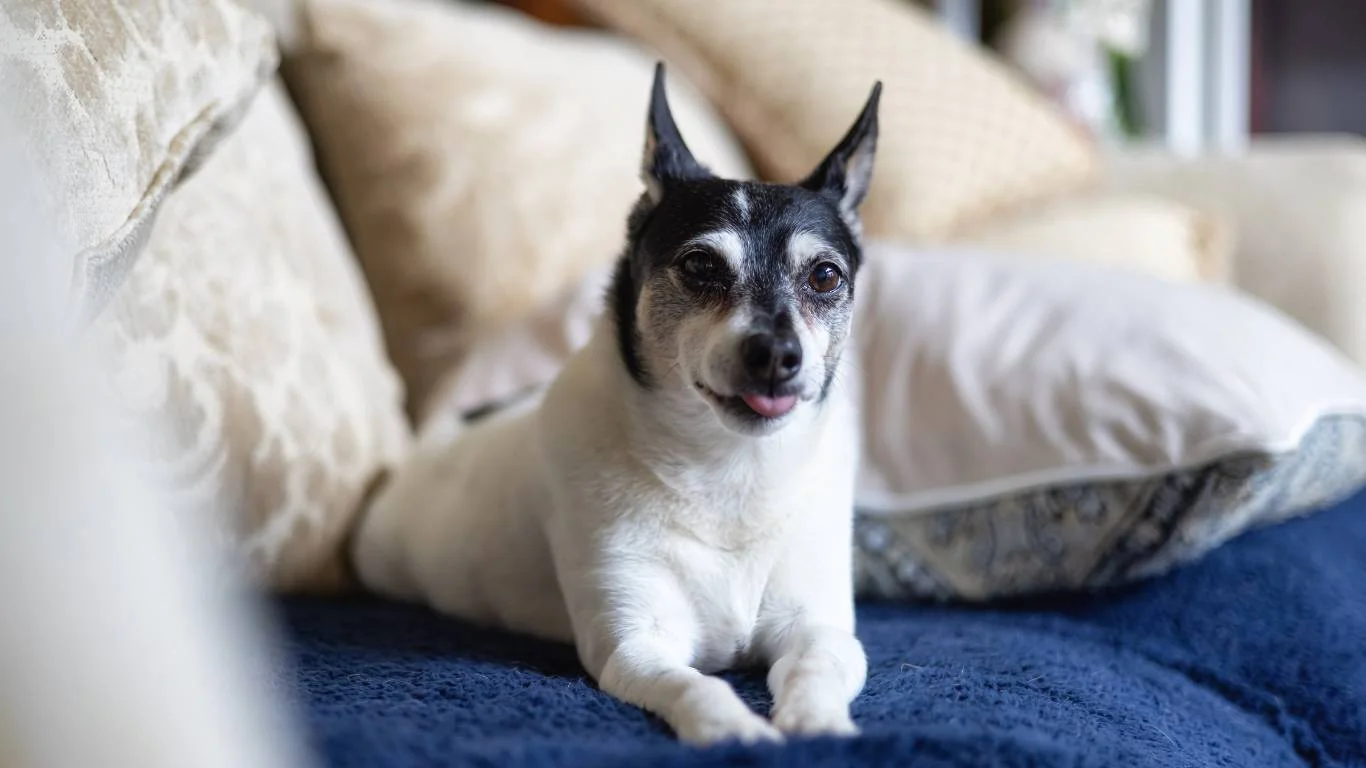
1. Keep Your Dog Cool During Hot Weather
If your dog’s panting is related to overheating, the solution is straightforward: keep them cool! Whether it’s a hot summer day or they’ve been running around a lot, it’s essential to provide your dog with a cool, shaded place to rest and plenty of fresh water to drink. Some dogs, especially brachycephalic breeds (like Bulldogs, Pugs, and Shih Tzus), have a harder time regulating their body temperature due to their short snouts. This makes them especially vulnerable to heat exhaustion or heatstroke.
From my experience, I recommend taking a few extra steps to keep your dog cool:
- Provide a cool space: Make sure your dog has access to a cool area in the house where they can rest. A fan or air conditioning can help lower the room’s temperature, and a damp towel over their body can cool them down effectively.
- Hydration: Make sure your dog always has access to clean, cool water. Dehydration can exacerbate panting, so keeping your dog hydrated is a must.
- Limit exercise during peak heat: If you’re taking your dog for a walk, do it early in the morning or later in the evening when it’s cooler. Avoid walking them during the hottest part of the day, as this can lead to overheating.
If your dog shows signs of heatstroke, like excessive drooling, vomiting, or a very rapid heartbeat, get them to a cool place immediately and contact your vet for guidance. Rapid intervention can save lives in these situations.
2. Manage Anxiety and Stress
If anxiety or stress is causing your dog’s excessive panting, it’s time to take a closer look at their emotional well-being. Dogs, just like people, can experience stress, and it can cause them to pant, pace, and exhibit other signs of anxiety. Whether it’s separation anxiety, fear of loud noises, or simply being in an unfamiliar environment, you can take steps to help calm your dog down.

Here are a few ways you can help manage your dog’s anxiety and reduce excessive panting:
- Provide a safe space: If your dog is anxious, it’s crucial to create a “safe zone” where they can retreat when they feel stressed. A quiet room with their bed, some favorite toys, and perhaps an item with your scent can help them feel more secure.
- Use calming aids: Some dogs respond well to products like calming collars, pheromone diffusers, or anxiety wraps. These items help to reduce anxiety by mimicking the calming effects of the mother’s scent or applying gentle pressure to their body.
- Behavioral training: For dogs with severe anxiety, working with a professional dog trainer who specializes in behavior modification can be extremely helpful. They can help your dog learn coping mechanisms and desensitize them to triggers that cause stress.
In addition to these methods, you may want to consult with your veterinarian to rule out any medical issues contributing to your dog’s anxiety. In some cases, medications like anti-anxiety drugs might be recommended to help calm your dog down.
3. Check for Pain and Underlying Health Conditions
If your dog’s panting is persistent and seems unrelated to heat or anxiety, it might be time to consider underlying health conditions. Dogs that are in pain or dealing with a medical issue often pant excessively, and sometimes, they can’t communicate exactly what’s wrong. If your dog is panting a lot and you can’t find an obvious cause, it’s essential to take them to the vet for a thorough check-up.
Some common health conditions that can lead to excessive panting include:
- Arthritis or joint pain: Dogs that are suffering from chronic pain, like arthritis, might pant excessively due to discomfort. If your dog is panting along with limping or showing signs of stiffness, it’s time to visit your vet.
- Respiratory issues: Conditions like collapsed trachea, asthma, or pneumonia can cause panting as a way to cope with difficulty breathing. If your dog is panting heavily and struggling to catch their breath, a vet visit is a must.
- Heart disease: Panting, especially if it’s accompanied by coughing or lethargy, may be a sign of heart disease. Dogs with heart conditions often have trouble getting enough oxygen, leading to increased panting.
- Cushing’s disease: This hormonal disorder can cause excessive panting as one of its symptoms. Other signs of Cushing’s include increased thirst and urination, a pot-bellied appearance, and thinning skin.
If your dog has been panting excessively and showing other signs of illness, don’t hesitate to consult your veterinarian. They may recommend blood tests, X-rays, or ultrasounds to pinpoint the cause and start appropriate treatment. Catching these conditions early can improve your dog’s quality of life and prevent more serious complications down the road.
4. Medications and Treatment Options
Sometimes, panting is the result of a medication your dog is taking. Certain drugs, such as corticosteroids or pain medications, can cause increased panting as a side effect. If your dog has recently started a new medication and you’ve noticed an increase in panting, be sure to talk to your vet. They may be able to adjust the dosage or switch to a different medication to alleviate this side effect.

When it comes to managing excessive panting, your vet will be your best resource. They may suggest certain treatments, such as:
- Switching medications: If your dog is on a medication that’s causing excessive panting, your vet may be able to recommend alternatives that have fewer side effects.
- Antihistamines: For dogs that are panting due to allergies or respiratory issues, antihistamines may be prescribed to help alleviate the symptoms.
- Pain management: If your dog’s panting is linked to pain, your vet may prescribe pain relief medication or recommend supplements to improve joint health.
Before making any changes to your dog’s treatment plan, always consult your veterinarian to ensure the best course of action for your pet’s health and well-being.
Understanding the Long-Term Effects of Excessive Panting in Dogs
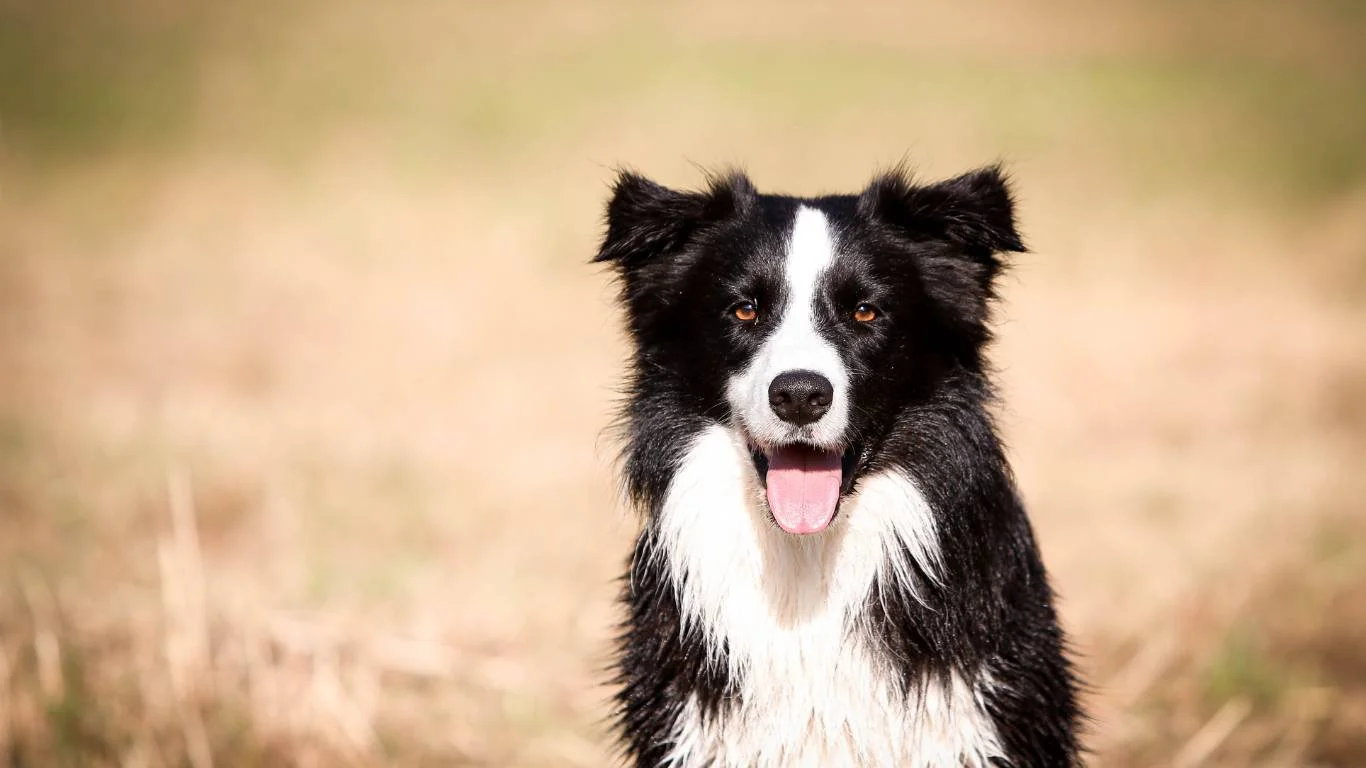
As we’ve covered in the previous sections, excessive panting in dogs can stem from a variety of causes, including heat, stress, pain, and underlying medical conditions. But what happens when panting becomes a chronic issue, rather than just a short-term symptom? If left unaddressed, excessive panting can lead to long-term consequences for your dog’s health and overall well-being.
As a veterinary assistant with years of experience, I’ve seen how chronic panting can significantly affect a dog’s quality of life. Whether it’s due to undiagnosed pain, untreated anxiety, or heart disease, prolonged panting can signal deeper health concerns that may require immediate attention. Understanding these long-term effects can help you prevent more serious health problems down the road.
The Impact of Chronic Panting on Your Dog’s Health
Chronic panting, especially when paired with other symptoms like lethargy, excessive drooling, or difficulty breathing, can lead to several complications. For example, if your dog is constantly panting due to heat or anxiety, this may cause them to become dehydrated or stressed over time, which can weaken their immune system and make them more susceptible to infections.
Let’s break down the long-term effects of unchecked excessive panting:
- Dehydration: Excessive panting leads to fluid loss, and if your dog isn’t drinking enough water to compensate, dehydration can quickly set in. Dehydration can affect their organ function and make it harder for their body to regulate its temperature, exacerbating the panting problem.
- Respiratory issues: If panting is caused by a respiratory condition, prolonged strain on your dog’s lungs and airways can cause further damage. Over time, untreated respiratory issues can lead to chronic breathing difficulties and may require more intensive treatment.
- Chronic stress: Dogs that pant excessively due to anxiety or stress may begin to develop more serious behavioral issues. Chronic stress can cause gastrointestinal problems, loss of appetite, and even lead to other emotional disorders. Managing stress and anxiety in these dogs is critical to maintaining their mental and physical health.
- Heart problems: Dogs with heart disease or circulatory issues often pant because their body isn’t receiving enough oxygen. If not treated, these issues can lead to a decline in their overall health, including severe lethargy, reduced exercise tolerance, and even organ failure.
Preventing Excessive Panting: Practical Tips for Pet Owners
Fortunately, there are proactive steps you can take to prevent excessive panting from becoming a long-term issue for your dog. As a vet assistant, I’ve seen firsthand how early intervention can make a world of difference for a dog’s health. By recognizing the signs and taking action quickly, you can prevent panting from becoming a chronic problem.
1. Keep Your Dog at a Healthy Weight
One of the most effective ways to prevent excessive panting caused by heat, stress, or respiratory issues is to ensure your dog maintains a healthy weight. Obesity is a common issue in dogs and can exacerbate conditions like joint pain, heart disease, and even heat intolerance. Dogs that are overweight have to work harder to breathe and regulate their temperature, making them more likely to pant excessively.
As a veterinary assistant, I’ve worked with many pet owners who were surprised by how much of an impact weight loss had on their dog’s panting. It’s often easier to manage panting if your dog is at a healthy weight, as they are less likely to experience the strain that leads to excessive panting.
2. Keep Your Dog Mentally Stimulated
Dogs that are bored or under-stimulated can experience anxiety, which often manifests as excessive panting. Providing your dog with regular mental stimulation can reduce stress and keep them from becoming anxious. Puzzle toys, interactive play, and new learning experiences can help to keep your dog’s mind engaged and calm.
If your dog’s panting is due to anxiety, keeping them mentally stimulated is a great way to reduce the frequency and intensity of their panting episodes. If you’re unsure how to stimulate your dog mentally, consider enrolling in obedience classes or trying new activities like agility training or scent work.
3. Regular Veterinary Check-ups
One of the most important things you can do to prevent long-term panting issues is to schedule regular veterinary check-ups. Routine exams help to catch underlying medical conditions early, before they become more severe and lead to chronic panting. Your vet can help rule out heart, respiratory, and joint problems that may be causing the excessive panting and provide you with a clear treatment plan.
Routine blood tests, X-rays, and physical exams are essential in keeping track of your dog’s overall health and ensuring that any conditions are addressed before they become chronic problems. Trust me—early detection can save you a lot of stress (and potentially prevent more expensive treatments down the road).
4. Behavioral Training for Anxiety
If anxiety is the cause of your dog’s excessive panting, behavioral training can help reduce their stress and improve their overall well-being. Working with a professional dog trainer who specializes in anxiety management can teach your dog how to cope with triggers, like separation anxiety or fear of loud noises. Additionally, there are many calming products on the market, such as calming collars or pheromone diffusers, that can help soothe your dog during stressful moments.
In my experience, dogs that suffer from anxiety can see remarkable improvements in their behavior with patience and consistency. Working with a trainer and using calming aids can make a huge difference in your dog’s stress levels and, in turn, reduce their excessive panting.
5. Take Extra Care During Hot Weather
As we’ve discussed earlier, heat can cause dogs to pant excessively. During hot weather, make sure to keep your dog cool and hydrated. Avoid exercise during peak heat hours, and if you’re taking your dog for a walk, try to stick to early mornings or evenings when temperatures are cooler. Additionally, ensure that your dog always has access to fresh, cool water and consider using cooling products, such as cooling mats or vests, during hot weather.
Taking extra precautions during hot days can help prevent overheating and keep your dog from panting excessively in the first place. If you live in an area with particularly high temperatures, consider investing in a cooling pad or providing a shaded outdoor space for your dog to rest.
Resources and Further Reading
If you’re looking for more information about your dog’s health or excessive panting, there are several reputable resources you can turn to. Trusted organizations like the American Kennel Club and PetMD offer great advice and guides on how to manage your dog’s health, from stress management to treating medical conditions that may be causing excessive panting.
Disclaimer
While I am a veterinary assistant with experience in the field, this article is not a substitute for professional veterinary advice. Always consult with your veterinarian for a proper diagnosis and treatment plan for your dog’s health concerns. Excessive panting can sometimes indicate serious health conditions, and early intervention is essential for the best outcome.
